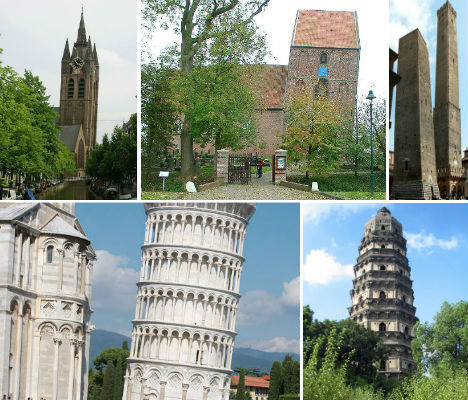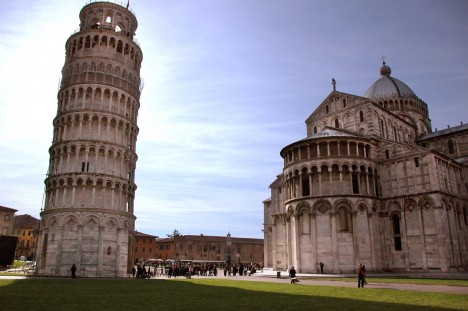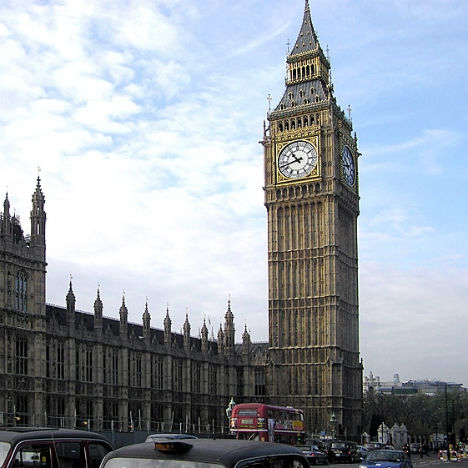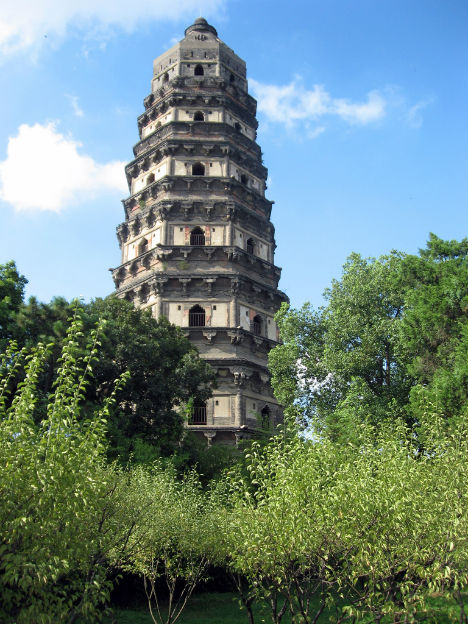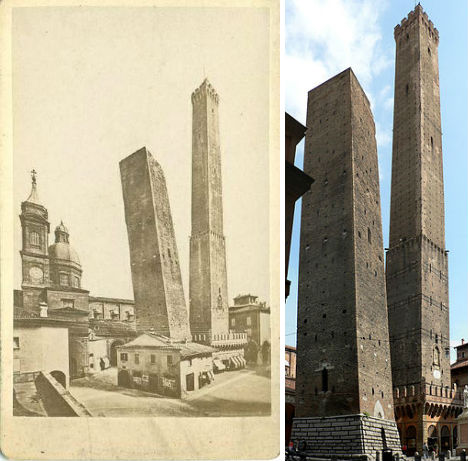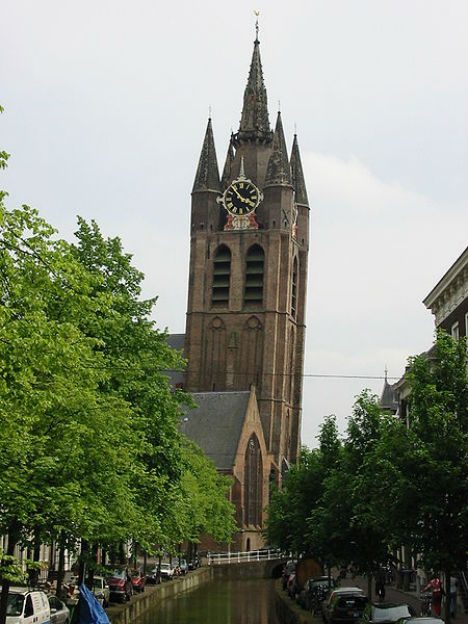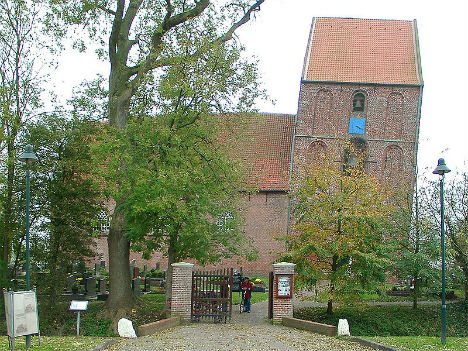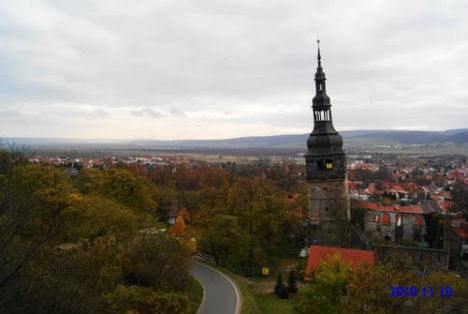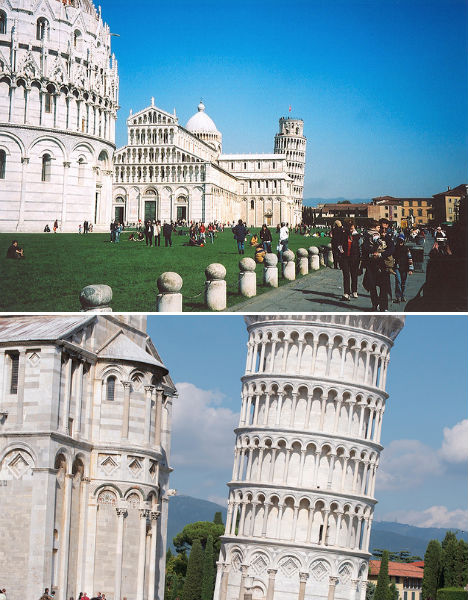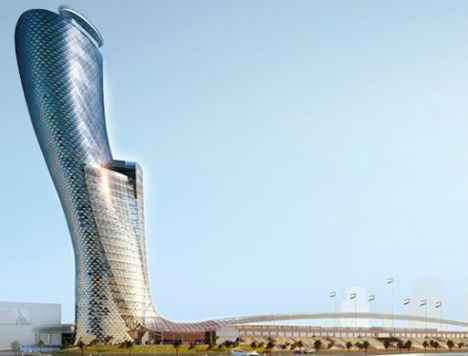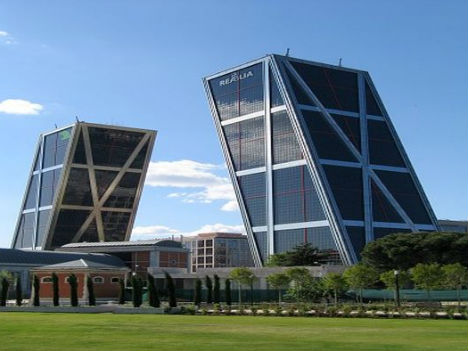When you don’t place a structure – particularly a very tall structure – on a solid foundation, this is what happens. The building starts to lean, further and further each year, and though it may take centuries, it will eventually come crashing down without serious efforts to stabilize it. That’s what is happening to most of these thirteen leaning towers around the world, with the exception of a few that are tilted on purpose.
Notably, the world-famous Leaning Tower of Pisa slowly sloped more and more for most of its 840-year history, but thanks to timely interventions (and over 30,000,000 USD) some of its tilt has indeed been not just arrested but slightly reversed. Through a 10-year effort to stabilize it, the tower has now been straightened by a few centimeters to preserve its integrity for centuries to come and reopen it to the public. This was not the first attempt of its kind – a previous try by Benito Mussolini to straighten the tower completely actually ended up making it tilt more.
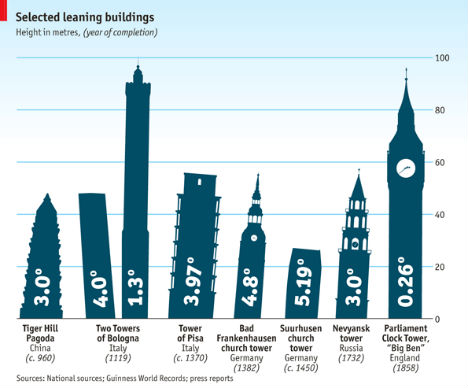
This infographic from The Economist gives us an initial idea of just how much many of the buildings on this list are off-kilter, from Big Ben at just 0.26 degrees to the Suurhusen church tower in Germany at 5.19 degrees. Read on to learn more about each leaning tower.
Big Ben, London, UK
(images via: wikimedia commons)
That’s right, it’s barely visible to the naked eye, but British Parliament have officially reported that its Clock Tower (a.k.a. Big Ben) is leaning northwest by 0.26 degrees (17 inches.) The level of the tilt has increased to 0.9 millimeters a year since 2003, and it seems that underground developments including a parking lot and an extension of the London Underground have caused the problem. Cracks have formed in the walls and ceilings of the house of commons.
Tiger Hill Pagoda, China
(images via: wikimedia commons)
Suzhou, China has its very own leaning tower in the form of a pagoda. The Huqiu Tower, known as the Tiger Hill Pagoda after the hill that it was built upon around the year 960 CE, leans by roughly three degrees. 154 feet tall, the pagoda has gradually slanted because half the foundation is rock and the other half soil. Stabilization efforts, including pumping concrete into the soil, has helped to stop further leaning, but the top and bottom of the tower vary by 2.32 meters.
Two Towers of Bologna, Italy
(images via: wikimedia commons)
Bologna’s two most prominent towers – both of which lean at a considerable angle – are major landmarks of this Italian city. They were constructed between 1109 and 1119. The taller one is called Asinelli and the shorter Garisenda. Asineli stands at nearly 319 feet in height; it was withstood lightning strikes, fires, collapses and bombing attacks in World War II. Garisenda, which is cited several times in Dante’s Divine Comedy, began slanting in the 14th century due to the softening ground.
Oude Kerk, Delft, The Netherlands
(image via: wikimedia commons)
Built in 1246, Oude Kerk (Old Church) is the oldest building in Delft, and its leaning gothic tower was added between 1325 and 1350. Locals have feared that the tower, which was likely built on an old filled-up canal, would come tumbling down, and almost had the tower razed to the level of the church roof in 1843. Oude Kerk is the resting place of famed Dutch artist Johannes Vermeer.
Nevyansk Tower, Russia
(images via: wikimedia commons)
Younger by far than most of the towers on this list save Big Ben, the Leaning Tower of Nevyansk was built in the 18th century. Its exact construction date and purpose are unknown – some speculate that it was a watchtower, a bellower, a prison or perhaps even a laboratory for chemical experiments during the Soviet age. There are local legends that the angle of the tower is intentional; restorers say that it was a defect during construction that the architects attempted to remedy using specially trimmed bricks. Today there’s a three-degree deviation between the base and the middle part of the tower.
The Leaning Temple of Huma
(image via: wikimedia commons)
The world’s only leaning temple, dedicated to the Hindu god Shiva, stands in the Indian state of Orissa. It’s unknown whether the considerable lean of the tower was induced by design or by accident, but interestingly, while the edifice leans, the pinnacle is perpendicular to the ground. It’s possible that the tower began to lean due to flood- or earthquake-caused displacement of the rocky foundation.
Suurhusen Church Tower, Germany
(images via: wikimedia commons)
Suurhusen is the world’s most leaning tower that is unintentionally tilted. A late medieval steeple located in northwestern Germany, The Leaning Tower of Suurhusen is a brick gothic church that currently leans at an angle of 5.193 degrees – beating the far more famous Tower of Pisa by 1.22 degrees. It was originally built in the Middle Ages on a foundation of oak tree trunks preserved by marshy groundwater; when the land was drained in the 29th century the wood rotted, which caused the tilt.
Bad Frankenhausen Church Tower, Germany
(images via: panaramio)
An underground spring that winds beneath the entire town of Bad Frankenhausen in the eastern German state of Thuringia is leaching earth from below, making structures like the church tower extremely unstable. The church’s steeple has been slanting since at least 1640, reaching 4.8 degrees in recent years. Efforts to stabilize it have failed, and it seems that the steeple will soon be lost to collapse.
Tower of Pisa, Italy
(images via: carolyn conner, francisco antunes)
Of course, you knew this one was coming. The ‘Leaning’ Tower of Pisa is the world’s most infamous tilted building even though it’s not the oldest, the tallest or the furthest-leaning. But thanks to the open ground around the campanile of Pisa’s cathedral, the angle of the tower is startlingly clear, making for fantastic photo opportunities. Over 183 feet tall, the tower was built on a mere 9-foot-deep foundation, and it began sinking almost immediately after construction began in 1173, progressing beyond the second floor by 1178. By 1272, the tower was still unfinished, and engineers built upper floors with one side taller than the other to compensate for the tilt, making the tower curved. Stabilization efforts have continued over the centuries, and the tower was declared fully stable in May 2008 after removing the bells, cinching the tower with cables and removing earth under the raised side. Engineers say it has stopped moving for the first time in history, and that it will remain standing for at least 200 years.
Capital Gate Tower, Olympic Stadium & Gate of Europe
(images via: capitalgate.ae, wikipedia 1, 2)
Aging structures aren’t the only towers in the world that seem to tilt dangerously close to destruction. Just look at the Capital Gate Tower of Abu Dhabi, a mixed-use skyscraper reaching 520 feet into the sky with a dramatic 18-degree lean to the west. Capital Gate was named the ‘World’s furthest-leaning man-made tower’ by the Guinness Book of World Records in 2010. The tower is stabilized by the world’s first “pre-cambered core”, which includes a huge amount of concrete reinforced with steel, as well as 490 piles drilled nearly 100 feet into the earth.
Other intentionally leaning modern wonders include the Tower of Montreal at the Olympic Stadium and the Gate of Europe in Madrid. The Tower of Montreal is officially the world’s tallest leaning tower at 575.8 feet. The Gate of Europe towers are twin 374-foot-tall office buildings with an incline of 15 degrees.
